Welcome to Decoding Queso Calories: Your Friendly Guide for Healthy Eating! In this article, we will explore the world of queso calories and uncover the truth behind its nutritional value. Queso, a popular cheese-based dip, is loved by many, but it’s essential to understand its impact on our health. We will dive into the calorie content, nutritional information, and even provide a low-calorie queso recipe for you to enjoy guilt-free.
- Understand the importance of knowing the nutritional information of queso and its impact on healthy eating choices.
- Learn about the caloric content and macronutrients present in queso.
- Explore the potential health benefits of consuming queso in moderation.
- Discover tips for making healthier choices when it comes to queso dip and understanding its calorie count.
- Dive into the specific nutrition facts of queso dip and their impact on our health.
What Are Queso Calories and Nutritional Information?
Let’s start by delving into the world of queso calories and understanding its nutritional composition. Whether enjoyed as a dip, drizzled on nachos, or melted over a plate of enchiladas, queso is a popular indulgence for many. But before we dig in, it’s important to know what we’re consuming and how it fits into our overall diet.
When it comes to queso, the nutritional value varies depending on the type of cheese used and any additional ingredients. Generally, queso is made with cheese that is high in fat and calories, such as cheddar or Monterey Jack. However, it also provides essential nutrients like protein and calcium.
To give you a better idea of the nutritional breakdown, let’s take a look at the average calorie content of queso cheese. According to the USDA, one ounce of cheddar cheese contains approximately 110-120 calories. This means that enjoying a generous serving of queso can quickly add up in terms of calories.
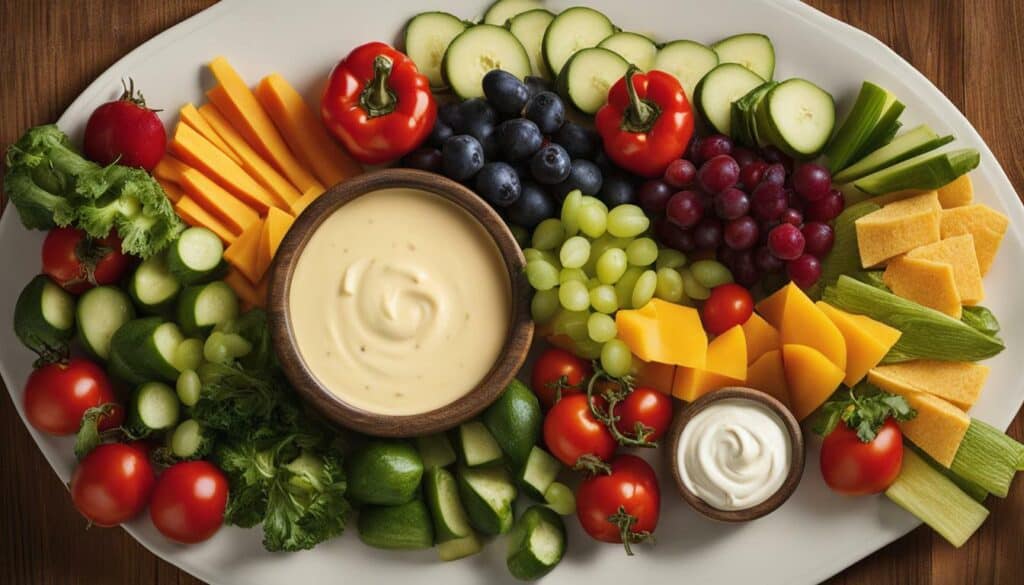
| Nutrient | Amount per 1 oz (28g) serving |
|---|---|
| Calories | 110-120 |
| Protein | 7g |
| Fat | 9g |
| Calcium | 200mg |
While queso can be enjoyed in moderation as part of a well-balanced diet, it’s important to be mindful of portion sizes and to pair it with nutrient-rich foods. Consider complementing your queso indulgence with a side of fresh vegetables or whole-grain crackers to add fiber and vitamins to your snack. Remember, balance is key when it comes to healthy eating!
The Health Benefits of Queso
Beyond its delicious taste, queso can actually offer some surprising health benefits. Let’s take a closer look at why indulging in this cheesy delight can be good for you.
1. Good Source of Protein: Queso, made from dairy products, is a rich source of protein. Protein is essential for building and repairing tissues, supporting muscle growth, and boosting overall immunity. Including queso in your diet can help ensure an adequate intake of this important macronutrient.
2. Calcium-Rich: Queso is also a great source of calcium, which is crucial for maintaining strong and healthy bones. Calcium plays a significant role in bone health and helps prevent conditions like osteoporosis. Incorporating queso into your meals can be an easy and tasty way to increase your calcium intake.
3. Vitamin Boost: Queso contains various vitamins, including vitamin A, vitamin B12, and vitamin D. Vitamin A is essential for good vision and a healthy immune system, while vitamin B12 supports nerve function and the production of red blood cells. Vitamin D plays a crucial role in maintaining bone health and promoting proper absorption of calcium.
Now that we’ve explored the health benefits of queso, it’s important to note that moderation is key. While queso can be a nutritious addition to your diet, it is also high in calories and saturated fat. Be mindful of portion sizes and enjoy queso as part of a balanced and varied diet.

| Nutrition Facts of Queso | Per 100g |
|---|---|
| Calories | 265 |
| Total Fat | 21g |
| Saturated Fat | 13g |
| Protein | 16g |
| Carbohydrates | 2g |
Decoding Queso Dip: The Calorie Count
Queso dip is a popular choice among many, but have you ever wondered how many calories it contains? Let’s delve into the world of queso dip calorie counts and uncover some surprising facts.
When it comes to queso dip, the calorie count can vary depending on the ingredients and preparation methods used. To get a better understanding of the caloric content, let’s take a closer look at some common components that make up this cheesy delight. Keep in mind that these values are approximate and can differ based on recipe variations.
| Ingredients | Calories per Serving |
|---|---|
| Cheese (Cheddar) | 115 |
| Milk (Whole) | 63 |
| Butter | 102 |
| Jalapenos (Sliced) | 4 |
| Tomatoes (Diced) | 18 |
| Onions (Chopped) | 22 |
| Tortilla Chips (1 ounce) | 152 |
Remember, these numbers represent average calories per serving and may vary depending on portion size and additional ingredients. It’s always a good idea to check food labels or online resources for precise nutritional information.
To reduce the caloric content of your queso dip, you can make simple swaps and modifications. Consider using reduced-fat cheese or opting for a combination of different cheeses. You can also substitute whole milk with low-fat alternatives or experiment with non-dairy milk options. Adding fresh vegetables like bell peppers or corn can elevate the nutritional value without significantly increasing the calorie count.
So, the next time you’re enjoying a delicious bowl of queso dip, keep in mind the calorie count and make mindful choices. With a little creativity and attention to ingredients, you can savor this tasty treat while staying on track with your healthy eating goals.
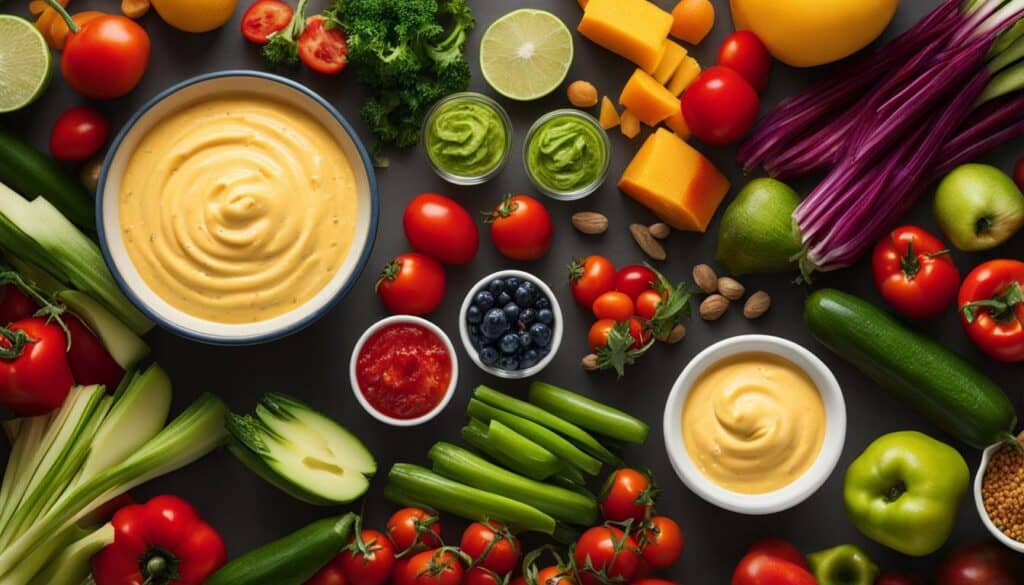
Understanding the nutrition facts of queso dip is crucial for making informed choices. Let’s break down the macronutrients and explore their implications.
Queso dip is a popular choice for parties and gatherings, but it’s important to be aware of its nutritional content. A typical serving size of queso dip is about 2 tablespoons, and within that small portion, you’ll find a range of macronutrients.
| Nutrient | Amount per Serving |
|---|---|
| Calories | 80 |
| Total Fat | 7g |
| Saturated Fat | 4g |
| Cholesterol | 20mg |
| Sodium | 170mg |
| Carbohydrates | 2g |
| Protein | 2g |
As you can see, queso dip can be high in calories and fat. It’s important to enjoy it in moderation and balance it with healthier choices. Pairing it with fresh vegetables, such as sliced bell peppers or celery, can add nutrients and boost the overall nutritional value of your snack.
Remember, understanding the nutrition facts of queso dip allows you to make informed choices and enjoy it as part of a balanced diet. So, the next time you indulge in a cheesy dip, do so mindfully and savor the flavors while keeping your overall health goals in mind.
Creating a Low-Calorie Queso Recipe
Craving a delicious queso dip without the guilt? Look no further! I have a fantastic low-calorie queso recipe that will satisfy your taste buds and keep you on track with your health journey. This recipe is packed with flavor and nutrition, making it a perfect choice for a party or a cozy night in.
To make this low-calorie queso dip, you will need the following ingredients:
- 1 cup of low-fat Greek yogurt
- 1 cup of reduced-fat shredded cheddar cheese
- 1/2 cup of chunky salsa
- 1/2 teaspoon of cumin
- 1/2 teaspoon of paprika
- 1/4 teaspoon of garlic powder
- 1/4 teaspoon of onion powder
- Fresh cilantro for garnish
To prepare the queso dip, simply follow these steps:
- In a saucepan over low heat, combine the Greek yogurt, shredded cheddar cheese, salsa, cumin, paprika, garlic powder, and onion powder.
- Stir continuously until the cheese is melted and the mixture is well combined.
- Remove from heat and garnish with fresh cilantro.
Serve the low-calorie queso dip with whole-grain tortilla chips, carrot sticks, or bell pepper slices for a nutritious and satisfying snack or appetizer. This recipe yields approximately 8 servings, with each serving containing about 70 calories.
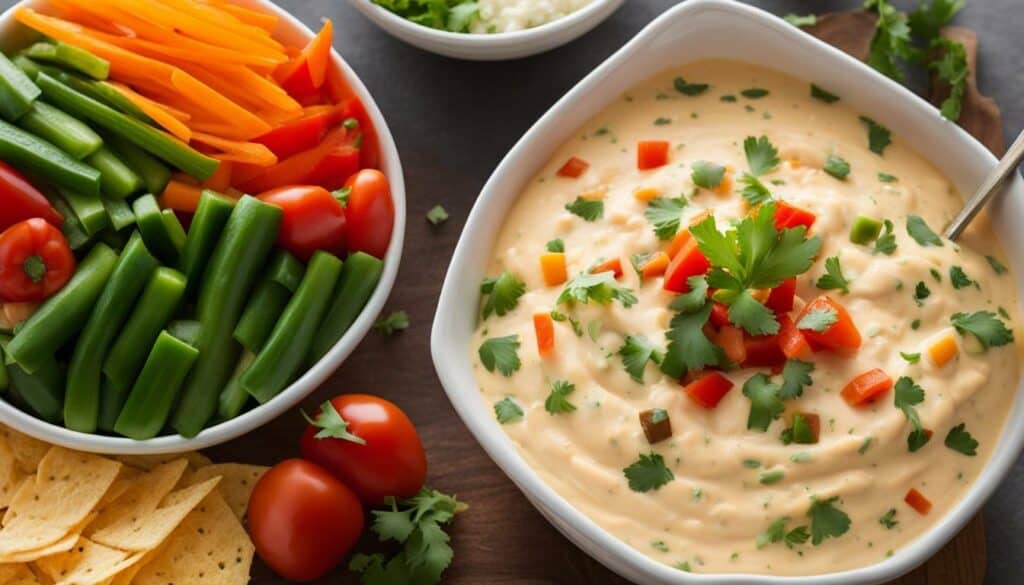
| Ingredient | Amount | Calories |
|---|---|---|
| Low-fat Greek yogurt | 1 cup | 130 |
| Reduced-fat shredded cheddar cheese | 1 cup | 150 |
| Chunky salsa | 1/2 cup | 20 |
| Cumin | 1/2 teaspoon | 0 |
| Paprika | 1/2 teaspoon | 3 |
| Garlic powder | 1/4 teaspoon | 2 |
| Onion powder | 1/4 teaspoon | 2 |
| Fresh cilantro | For garnish | 0 |
Understanding Food Labels: Decoding the True Meaning
Food labels can be overwhelming, but with a little knowledge, they can become your best friend. Join me as we unravel the hidden truths behind food labels and learn how to make smarter choices. When we pick up a packaged food item, the first thing we often look at is the nutrition label. This label provides crucial information about the macronutrients, micronutrients, and serving sizes. By understanding and decoding the information on food labels, we can make informed decisions and prioritize our health.
To begin with, let’s focus on the “Nutrition Facts” section. This section lists the serving size and the amount of calories, fat, carbohydrates, protein, and other nutrients present in a single serving of the product. Pay attention to the serving size as it may differ from what you actually consume. Compare it with the amount you typically eat to accurately calculate the nutrient content.
Next, look out for the ingredients list. Food manufacturers are required to list all ingredients used in a product, with the most abundant ingredient listed first. Be aware of added sugars, unhealthy fats, and artificial additives that may be hidden within the ingredients. Familiarize yourself with the names of these substances to make better choices for your well-being.
| Nutrient | % Daily Value* |
|---|---|
| Total Fat | 30% |
| Saturated Fat | 15% |
| Cholesterol | 10% |
| Sodium | 20% |
| Total Carbohydrates | 15% |
| Dietary Fiber | 25% |
| Sugars | 5% |
| Protein | 10% |
Lastly, take note of the “% Daily Value” column in the nutrition label. This indicates the percentage of each nutrient present in a single serving relative to the recommended daily intake. It can help you determine whether a particular food item is high or low in a specific nutrient. Keep in mind that individual nutritional needs may vary, so it’s essential to consider your personal dietary requirements.
Decoding food labels empowers us to make mindful choices and take control of our health. By understanding the nutrition facts and ingredients, we can make informed decisions about the food we consume. Remember, a small step towards decoding food labels can lead to significant changes in our overall well-being.
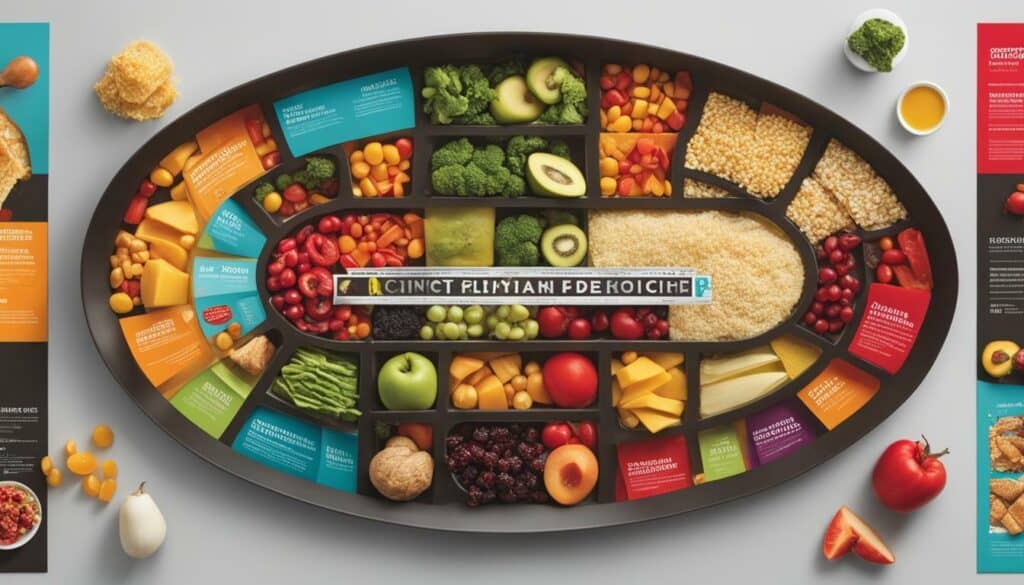
Building healthy and balanced meals doesn’t have to be complicated. Let’s explore the Healthy Eating Plate and discover how it can serve as a roadmap to nourishing our bodies.
The Healthy Eating Plate is a visual representation of a well-rounded diet, designed by nutrition experts at Harvard T.H. Chan School of Public Health. It offers a simple and practical approach to creating meals that promote good health and provide the essential nutrients our bodies need.
At the center of the plate, you’ll find an abundance of colorful vegetables and fruits. These should make up the largest portion of your meal, providing a rich source of vitamins, minerals, and fiber. Aim for a variety of options to ensure you receive a wide range of nutrients.
Next, fill a quarter of your plate with whole grains. Choose options like whole wheat bread, brown rice, or quinoa, which are higher in fiber and more nutritious than refined grains. Whole grains provide sustained energy, support digestion, and help regulate blood sugar levels.
| Healthy Eating Plate |
|---|
 |
The remaining quarter of your plate is dedicated to lean proteins such as poultry, fish, tofu, or beans. These sources of protein are essential for muscle growth, repair, and overall health. Be mindful of portion sizes for optimal balance and include different protein sources throughout the week.
To complete your meal, add a small portion of healthy fats, such as olive oil, avocados, or nuts. These fats are important for brain function, nutrient absorption, and heart health. Remember to moderate your intake, as fats are calorie-dense.
It’s important to note that the Healthy Eating Plate is not just about what you eat, but also about staying active. Regular physical activity is essential for maintaining a healthy weight, reducing the risk of chronic diseases, and enhancing overall well-being. Combine the Healthy Eating Plate with regular exercise to optimize your health.
Conclusion
As we come to the end of Decoding Queso Calories: Your Friendly Guide for Healthy Eating, I hope you feel empowered with the knowledge to make informed decisions about queso and your overall diet. Remember, a balanced approach is key to enjoying queso without compromising your health goals.
By understanding the nutritional information of queso and decoding its calorie count, you can make smarter choices when it comes to indulging in this delicious cheese dip. Whether you opt for a traditional queso dip or a low-calorie recipe, moderation is key. Be mindful of portion sizes and consider incorporating queso as part of a balanced diet.
While queso can be enjoyed in moderation, it’s important to also prioritize a well-rounded eating plan. Decode food labels to understand the true meaning behind the ingredients and make sure to incorporate a variety of healthy choices into your meals. The Healthy Eating Plate serves as a guide, reminding us to include plenty of vegetables, fruits, whole grains, and healthy oils in our diet for optimal health.
By staying informed and making conscious choices, you can savor the goodness of queso while still maintaining a healthy lifestyle. So go ahead, enjoy your favorite queso dishes, and remember to savor every bite.
FAQ
Q: How can I make healthier choices when ordering food and drinks at Starbucks?
A: To make healthier choices at Starbucks, consider ordering beverages like black espresso or drip coffee blends. For meals, opt for whole-wheat wraps and protein-rich snacks. Remember to check the nutritional information on Starbucks’ website or in-store pamphlets and customize your orders according to your personal needs.
Q: How can I decode food labels and understand their true meaning?
A: Decoding food labels involves paying attention to the ingredients, serving size, and nutritional information. Look for keywords like “whole grain,” “low sodium,” or “no added sugars.” Be mindful of hidden ingredients and additives. Understanding the true meaning of food labels helps you make informed decisions about the foods you consume.
Q: What is the Healthy Eating Plate and how can it guide me in creating balanced meals?
A: The Healthy Eating Plate is a guide to help you create balanced and nutritious meals. It emphasizes filling half your plate with vegetables and fruits, choosing whole grains, incorporating healthy oils, and staying physically active. By following the Healthy Eating Plate, you can ensure a well-rounded and healthy diet.
Can the Guide for Decoding Ice Cream Sandwich Calories Apply to Other Foods as Well, Such as Queso?
Decoding the ice cream sandwich calories provides a helpful guide in understanding its nutritional value. However, applying this knowledge to other foods like queso might not be as straightforward. Since queso has different ingredients and varying cooking methods, it requires a separate analysis. It’s essential to read nutrition labels or consult reliable sources for accurate information and make informed choices about your overall dietary intake.

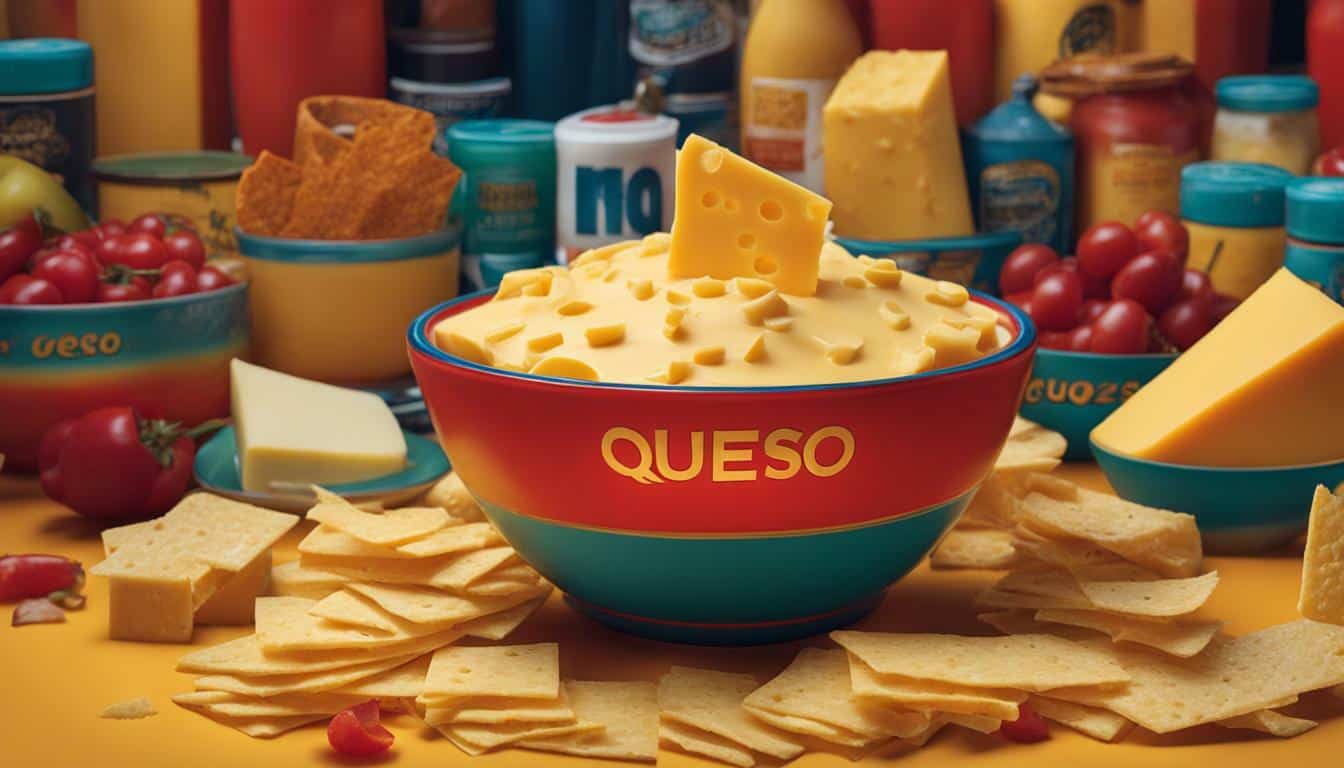
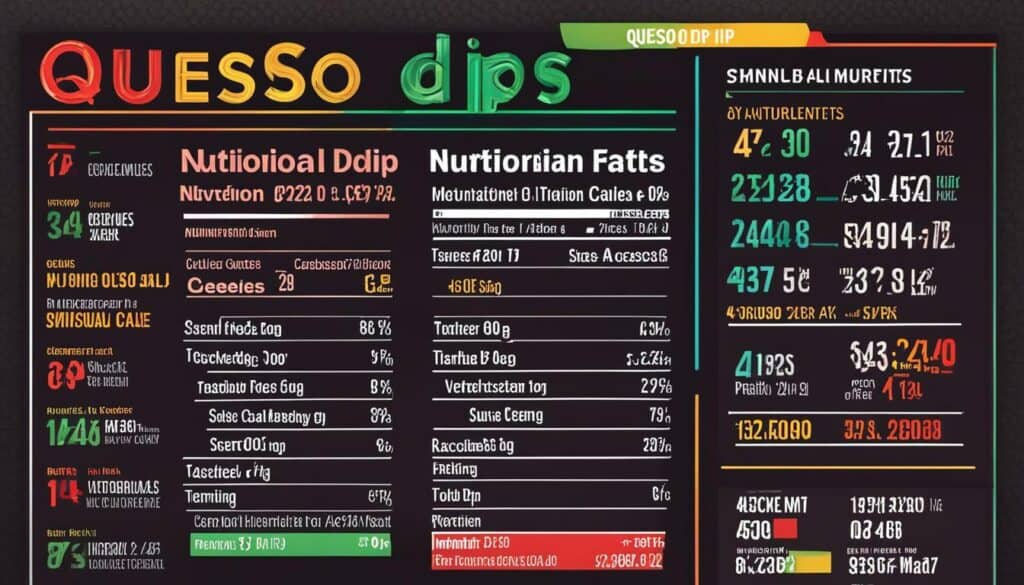



Leave a Reply